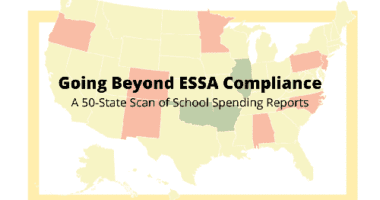TUDA Data Show Cause for Concern — and for Hope
Our analysis of the Trial Urban District Assessment (TUDA) results, which includes 21 districts nationwide, shows that even for similar groups of students, there’s wide variation in student performance across districts. Students in districts like Miami-Dade, Hillsborough County (Fla.), and Charlotte repeatedly outperform those in districts like Detroit, Cleveland, Fresno, and Philadelphia.
These between-district differences aren’t trivial: Low-income, African American eighth-graders in Boston, for example, are outperforming those in Detroit by nearly 35 points in math. The difference in fourth-grade math performance between low-income students in Charlotte and Detroit is nearly as large.
And it’s deeply concerning that performance in some districts has stagnated — or fallen.
From 2003 to 2013, fourth-grade reading performance among Cleveland’s low-income, African American students fell by 7 points. Among the district’s low-income, Latino fourth-graders, reading performance fell by 10 points, even as low-income, Latino students statewide saw their scores rise substantially. In districts like Cleveland, students who were starting off behind their peers in the state — and the nation — are falling even further behind.
But not all of the news from TUDA is discouraging. Some districts, like Los Angeles, have shown rapid, meaningful improvement. There, reading scores for the district’s low-income, Latino eighth-graders have risen by 16 points over the last decade and by five points in just the last two years. And in the District of Columbia Public Schools, performance for low-income students and students of color has improved in all four grades and subjects since 2011.
Moreover, some urban districts have improved faster than the states they’re located in, narrowing gaps to state averages. From 2003 to 2013, Atlanta’s low-income, African American students improved faster than their counterparts across Georgia in fourth and eighth-grade reading and math. The same is true for Charlotte’s low-income, Latino students in fourth and eighth-grade reading and eighth-grade math.
There’s much we can learn from those districts that are accelerating performance for their students — and from those districts where students aren’t making progress. But before we can do that, we must take time to digest the results.










